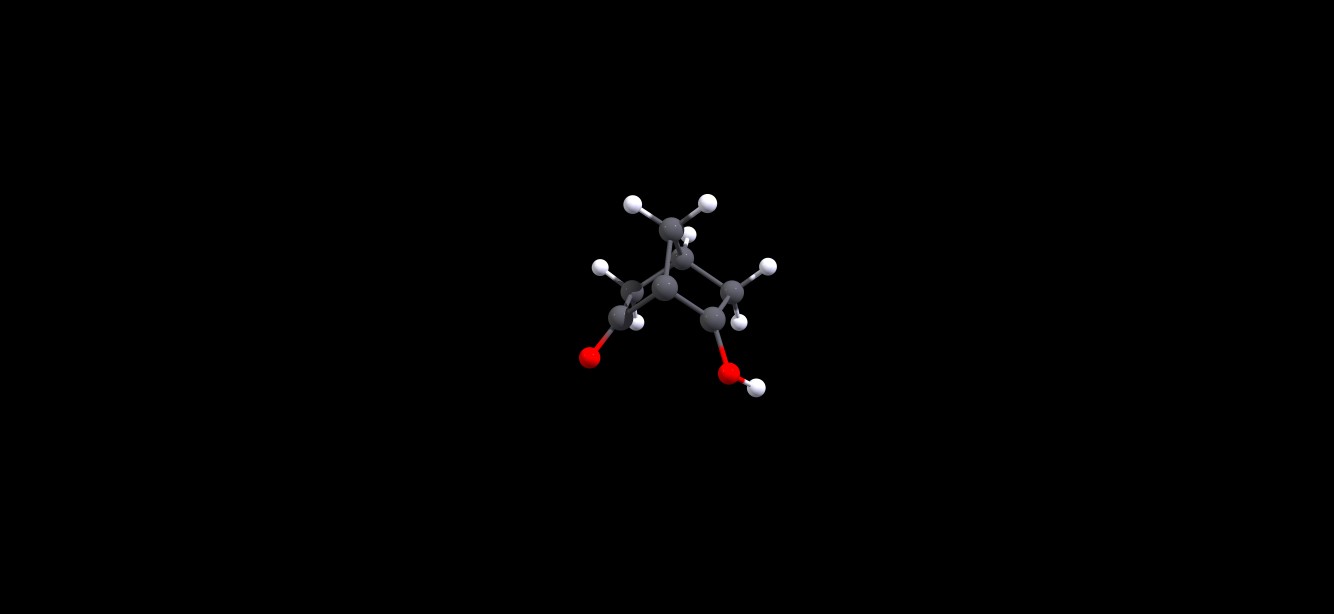Most of the times, the keto-tautomer is lower in energy than the enol-tautomer of a given compound. In all cases this is also very dependent of the actual conditions.
There are few cases, where the enol-tautomer can be dominant. One of the most common examples is malondialdehyde, and, of course, its derivatives.
I am fairly certain that the original question is trying to trick you into thinking this way; and testing your 3D awareness. Or something like this; I'm not sure.
With these structures it's always a good idea to visualise then. I recommend a molecule kit for hands on approaches, but clay and matches are great, too. Even chestnuts and toothpicks are great tools. If you are technically inclined, there are great programs, such as Avogadro (avogadro.cc), which can do basic modeling.
For the following, I have used gfn2-xtb as an optimizer; that is a semi-empirical level of theory, see xtb-docs.readthedocs.io.

You can clearly see that if you migrate the bridgehead-hydrogen, the resulting lone pair would not be able to form resonance with either of the carbonyl groups. That is known as the empirical observation named Bredt's rule.
On the other hand you are quite correct that you could form a tautomer from the other α-carbon. This carbon can easily distort to have planar coordination and the lone pair can be in resonance with the carbonyl groups. (Provided of course that the framework is localised bond orbitals; and that the model is a valid approach.)

On this level of theory, the enol form is about 64.5 kJ/mol higher in energy than the keto-form. So while there certainly is a theoretical possibility, the likelihood is very small.
(Just for giggles: the bridge tautomer is 246.6 kJ/mol higher in energy.)
Appendix
- Keto-Tautomer
17
symmetry c1
C -0.232194517 -0.455059284 -0.108971891
C 0.435695625 0.521858137 0.853516654
H 0.456616659 -1.075279085 -0.674274662
C -0.652035075 0.924669592 1.832141805
O 1.572314637 0.893979605 0.826125495
C -1.888025507 0.221717603 1.265101729
H -0.393829692 0.553384752 2.825493466
H -0.740240162 2.008868613 1.896308913
C -2.240914528 0.890781562 -0.065758217
H -2.719883618 0.149774125 1.962761267
C -1.080374859 0.487832943 -0.956781929
H -3.167688540 0.496107389 -0.485905106
H -2.336524789 1.975006913 -0.012902862
O -0.862082222 0.837168772 -2.079995835
C -1.289181703 -1.103984849 0.787745832
H -1.992066775 -1.719717994 0.228564710
H -0.851574934 -1.695108793 1.590840632
- Enol-Tautomer
17
symmetry c1
C -1.252989400 -1.048025267 0.775079043
C -0.235131476 -0.354975263 -0.135182749
C 0.316010839 0.694441373 0.817231157
C -0.666608713 1.048338273 1.645393318
C -1.895763330 0.268945971 1.228776635
C -2.331880748 0.853259922 -0.128837161
C -1.153613858 0.494907935 -1.014278443
O 1.568858497 1.186824174 0.741278311
O -0.952399200 0.822318914 -2.150244908
H 0.493388572 -0.958265049 -0.672260873
H 2.056130434 0.748941273 0.034835696
H -0.640184178 1.790739752 2.416980529
H -2.686913718 0.203266237 1.970705846
H -3.231277420 0.373221210 -0.518677687
H -2.502755602 1.928070454 -0.108020068
H -1.934290934 -1.708837720 0.239732785
H -0.777205764 -1.591075191 1.590309569
- Bridgehead-enol-tautomer
17
symmetry c1
C -1.375174317 -1.103606241 0.843045628
C -0.248454950 -0.489532946 -0.004463589
C 0.359288830 0.442230533 0.837984097
C -0.605216725 0.791584850 1.950720322
C -1.905351826 0.244045543 1.301925006
C -2.166063721 0.867188742 -0.087057960
C -0.935024925 0.450040319 -0.933532366
O 1.456979798 1.143062588 0.565484195
O -0.594744149 0.929934770 -1.975783635
H 1.590334610 1.860425911 1.199389402
H -0.422954467 0.294599984 2.906280842
H -0.604773151 1.872841199 2.115837534
H -2.773451234 0.269475098 1.961354663
H -3.086355462 0.469282331 -0.513923137
H -2.229917288 1.956721084 -0.092669863
H -2.077588583 -1.677749691 0.243281460
H -0.985680441 -1.728640075 1.644336401






